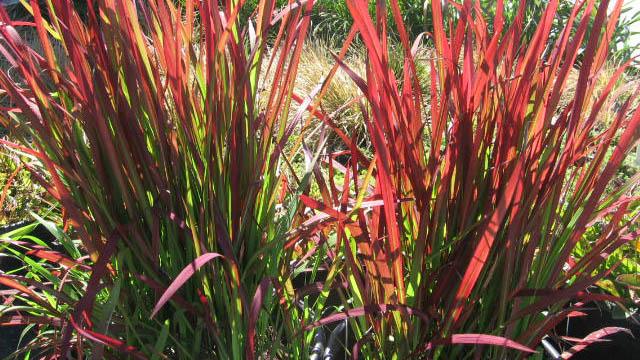Geography and distribution
Alang-alang is native to Asia, Micronesia, Australasia, Europe, southeast USA, Mexico and Africa and is estimated to cover 2,000,000 square kilometres (including natural grasslands) throughout the tropics.
Description
Imperata cylindrica is perennial, with basal leaves 3-100 cm long, 2-20 mm wide and stiff with scabrous leaf-blade margins. The flowering head is loosely cylindrical with abundant white silky hairs concealing the flowering parts.
Uses
Alang-alang is used in land reclamation and for soil erosion control on account of its vigorous, rhizomatous habit. However, these same characteristics make it a serious invasive species in pastures, abandoned cultivation and deforested areas throughout the tropics and subtropics and is considered by IUCN's Invasive Species Specialist Group as one of the world's worst weeds.
The stems of Imperata cylindrica are used as thatch, the stems and leaves for making ropes, and its fibres are used to make paper. In southeast Asia and Africa alang-alang is used in traditional medicine for treating a wide range of ailments.
Its rhizome is used for treating blood system disorders, nausea, indigestion and jaundice. In China the rhizome is used as a diuretic, a restorative tonic, and to stop bleeding; in southeast Asia it is used for treating diarrhoea and dysentery. In Namibia, the stems are ground into a powder used as a cosmetic, and also cut into pieces and strung for decorations. Alang-alang is generally regarded as having poor forage value.
Millennium Seed Bank: Seed storage
Kew's Millennium Seed Bank Partnership aims to save plant life world wide, focusing on plants under threat and those of most use in the future. Seeds are dried, packaged and stored at a sub-zero temperature in our seed bank vault.
Number of seed collections stored in the Millennium Seed Bank: Ten
Seed storage behaviour: Orthodox (the seeds of this plant survive being dried without significantly reducing their viability, and are therefore amenable to long-term frozen storage such as at the MSB)
Germination testing: Successful
















